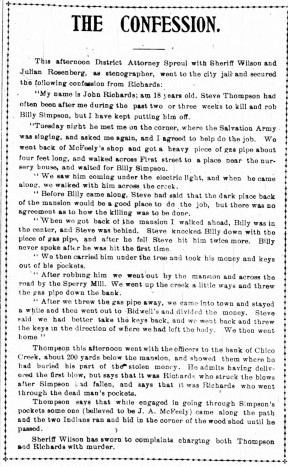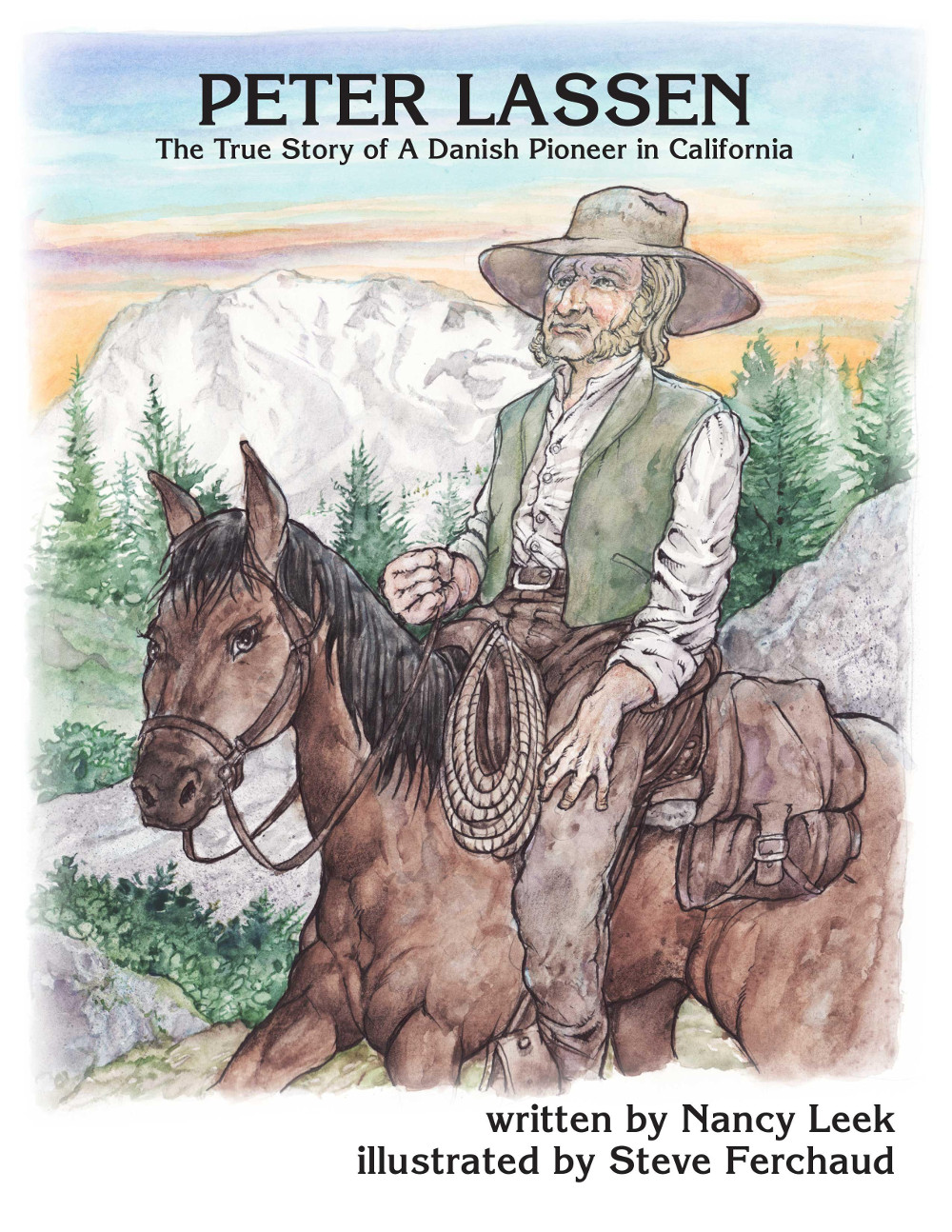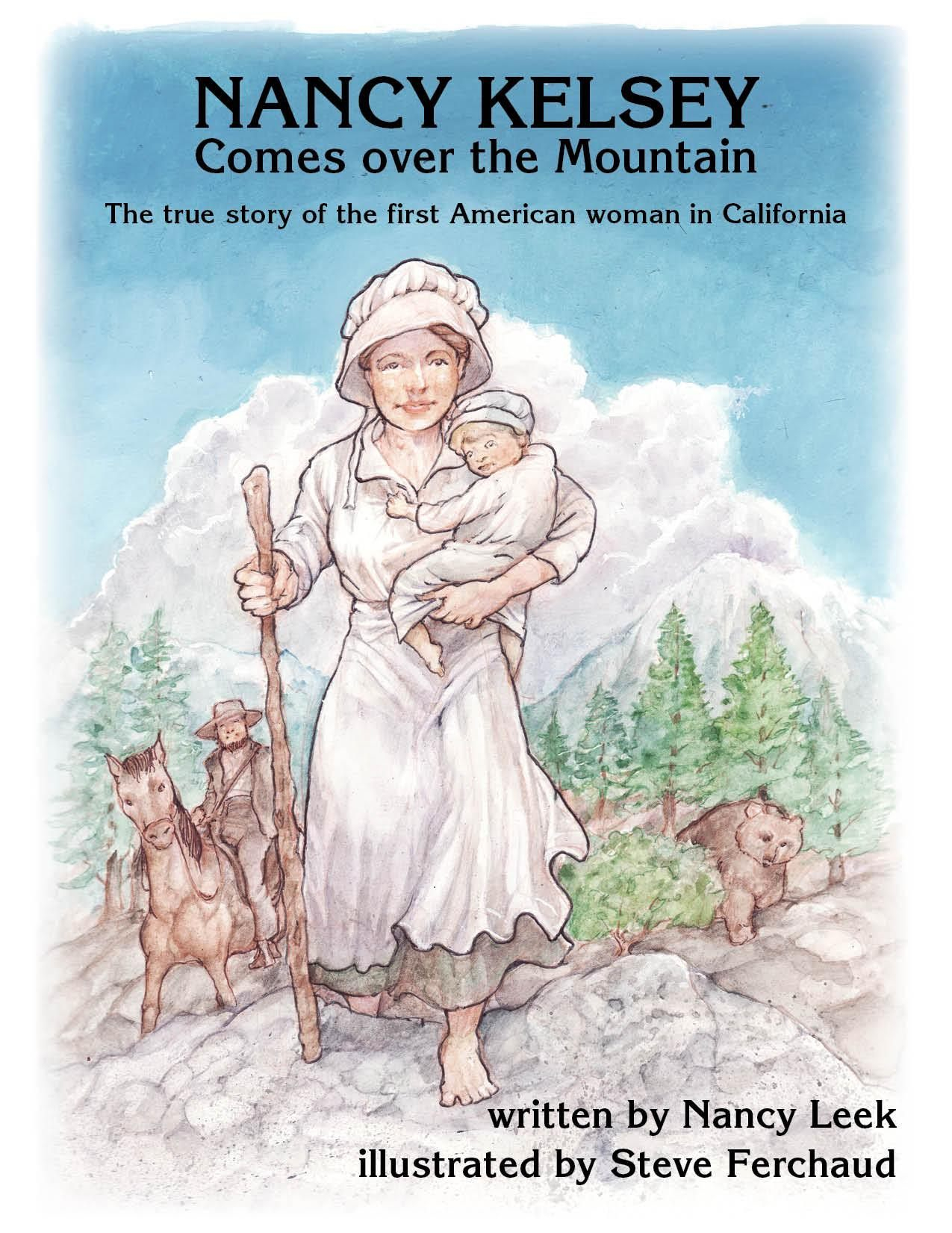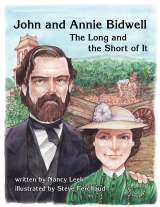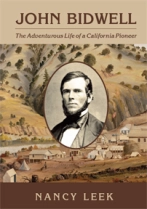Who could commit such a terrible crime? That was the question on everyone’s lips. But only two days after the murder, the police had a confession. Johnny Richards told his version of the murder to Butte County District Attorney Joseph D. Sproul, Sheriff Wilson, and a stenographer.
My name is John Richards; I am eighteen years old. Steve Thompson had often been after me during the past two or three weeks to kill and rob Billy Simpson, but I have kept putting him off.
Tuesday night he met me on the corner, where the Salvation Army was singing, and asked me again, and I agreed to help do the job. We went back of McFeely’s shop and got a heavy piece of gas pipe about four feet long, and walked across First street to a place near the nursery house, and waited for Billy Simpson.
We saw him coming under the electric light, and when he came along, we walked with him across the creek.
Before Billy came along, Steve had said that the dark place back of the mansion would be a good place to do the job, but there was no agreement as to how the killing was to be done.
When we got back of the mansion I walked ahead, Billy was in the center, and Steve was behind. Steve knocked Billy down with the piece of gas pipe, and after he fell Steve hit him twice more. Billy never spoke after he was hit the first time.
We then carried him under the tree and took his money and keys out of his pockets.
After robbing him we went out by the mansion and cross the road by the Sperry Mill. We went up the creek a little ways and threw the gas pipe down the bank.
After we threw the gas pipe away, we came into town and stayed a while and then went out to Bidwell’s and divided the money. Steve said we had better take the keys back, and we went back and threw the keys in the direction where we had left the body. We then went home.
Steve Thompson had his own version of the event. Most of the details coincided with Richards statement, except that Thompson said that the robbery was Richards’ idea. He admitted striking the first blow, but said that Richards hit Simpson after he fell. Since Thompson was not as cooperative, and changed his story between confessions, the authorities were inclined to believe Richards.
It took both men to drag the body out of the driveway and under a tree. They hid by a corner of the woodshed until J.A. McFeely had passed, and then rifled the dead man’s pockets. They found eighteen dollars and fifty cents in a purse and missed a dime that was down in the bottom of a pocket. They split the money. Johnny Richards told the D.A.:
We divided the money over by Bidwell’s, out in the grove. Steve hid his money by the chestnut tree down by the creek. I stayed out in the road. I took my money with me. He told me he would give me ten dollars. I got nine dollars and a quarter.
Chico Record 2 March 1900
As far as I know (I haven’t looked recently) there is still an old chestnut tree on the north bank of Chico Creek, near the bridge that goes to the new Social Sciences building.
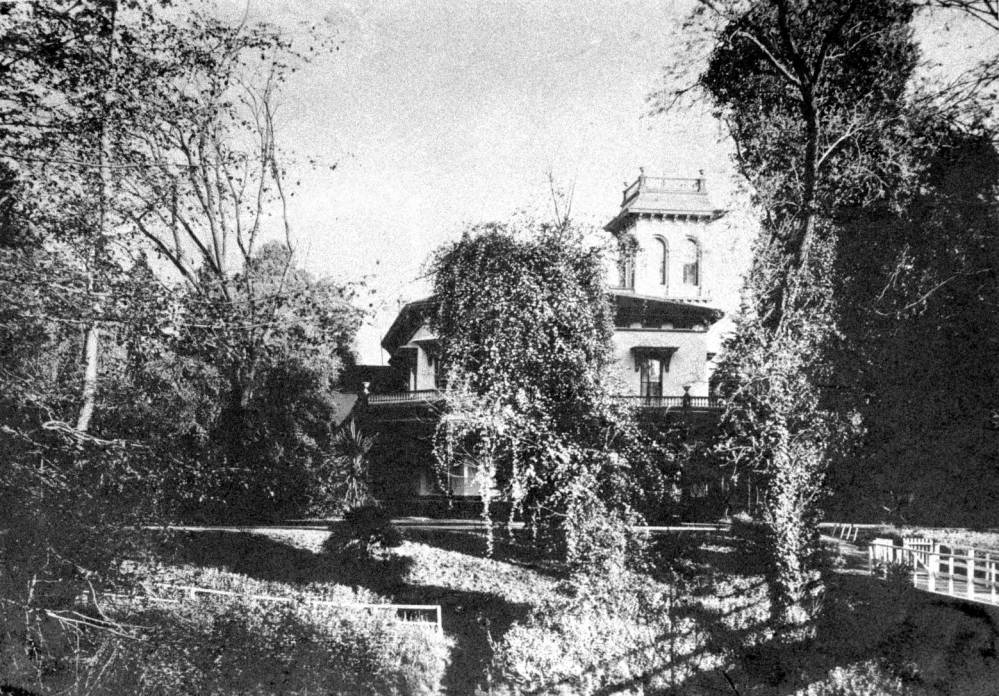
sc14491


